Visitors Management Software
Visitor Management Software (VMS) is a comprehensive solution designed to streamline and automate the process of registering, tracking, and managing visitors at any organization or facility. Whether it's a corporate office, healthcare facility, educational institution, or government building, VMS enhances security, improves operational efficiency, and provides a seamless experience for both visitors and staff.
At its core, Visitor Management Software replaces traditional manual logbooks, ensuring that all visitor interactions are accurately recorded and easily accessible. This software provides real-time data on the number of visitors in a building, their arrival times, departure times, and who they are meeting, helping organizations maintain a secure environment. The system can also manage pre-registered visits, allowing visitors to check-in quickly using self-service kiosks or mobile apps, reducing wait times and enhancing visitor satisfaction.
The software integrates seamlessly with other security systems, such as access control and surveillance, to monitor and track visitor movements within the facility. Furthermore, with features like automated notifications, QR code scanning, and digital badges, the software creates a more efficient, paperless experience for everyone involved. Compliance with legal and regulatory requirements is also ensured, as the system stores visitor logs and activity history for auditing and reporting purposes.
Visitor Management Software goes beyond just tracking who enters and exits a building. It can offer additional functionalities, such as appointment scheduling, pre-screening for health and safety protocols, and even analytics to provide insights into visitor traffic patterns. By using this technology, organizations can enhance security, improve operational efficiency, ensure regulatory compliance, and deliver a better experience for guests.
Standard Modules
Visitor Registration is a system used to log, manage, and monitor individuals entering a facility, such as a hospital, office, or secure premises. It streamlines the check-in process by capturing visitor details, purpose of visit, host information, and visit duration. This system enhances security, improves operational efficiency, and provides a professional first impression while maintaining a digital record of all entries for safety, compliance, and reporting purposes.
Features
- Digital Check-In/Check-Out
- ID Verification
- Visitor Badge Printing
- Host Notifications
- Pre-Registration
- Visitor Logbook
- Purpose & Department Selection
- Security Screening Questions
- Photo Capture
- Access Permissions
- Emergency Evacuation List
- Data Privacy Compliance
- Reporting & Analytics
- Blacklist/Watchlist Management
- Mobile & Kiosk Integration
Visitor Pass Management is a system designed to issue, track, and manage visitor passes within a facility, ensuring controlled access and enhanced security. It facilitates the creation of temporary access credentials for guests, contractors, vendors, or other non-staff individuals, while recording essential details such as entry time, purpose of visit, host, and duration of stay. This system plays a crucial role in maintaining a secure environment, ensuring only authorized individuals can access specific areas, and providing an auditable trail of all visitor activity.
Features
- Digital Pass Issuance
- Photo ID Integration
- QR Code or Barcode Scanning
- Access Level Configuration
- Pre-Approved Passes
- Time-Bound Validity
- Host Approval Workflow
- Customizable Templates
- Real-Time Tracking
- Visitor History Logs
- Blacklist & Watchlist Integration
- Emergency Roll Call Support
- Multi-Entry & Multi-Day Passes
- Mobile Pass Support
- Compliance & Data Privacy
Check-In and Badging is a system designed to streamline the process of registering and identifying visitors, employees, or contractors as they enter a facility. It enables secure and efficient check-in procedures while generating personalized badges for access control and visual identification. This system enhances facility security, improves visitor experience, and provides accurate records of all check-ins for operational and compliance purposes.
Features
- Self-Service Kiosks
- Digital Check-In
- Photo Capture
- Instant Badge Printing
- Host Notifications
- Pre-Registration Support
- ID Scanning & Verification
- Custom Badge Templates
- Access Control Integration
- Visitor Pass Expiry
- Check-Out Process
- Real-Time Visitor Logs
- Emergency Evacuation List
- Data Privacy Compliance
- Multi-Language Support
Visitor Checkout is the process of formally recording the departure of a visitor from a facility. It is a critical component of visitor management systems, ensuring accurate tracking of who is currently on-site and maintaining a complete log of entry and exit times. Efficient visitor checkout enhances security, supports emergency planning, and provides valuable insights into visitor flow and duration of stay.
Features
- One-Click Digital Checkout
- Automatic Checkout Reminders
- Badge Scanning for Exit
- Time Stamp Logging
- Real-Time Exit Updates
- Host Notification
- Overstay Alerts
- Check-Out via Mobile
- Multiple Visitor Checkout
- Custom Exit Surveys
- Visitor History Logs
- Automatic Badge Deactivation
- Emergency Roll Call Updates
- Integration with Access Control
- Data Privacy & Compliance
MIS (Management Information System) Reports are vital tools that provide structured data and insights to help organizations monitor performance, analyze trends, and support strategic decision-making. By compiling data from various departments, MIS reports ensure transparency, efficiency, and data-driven management.
Pricing
Standard Plan
Price: ₹ 9,999 / Per Year
Regular Price: ₹ 14,999
Including 1 year service and support
Standard Plan Modules

Visitor Registration
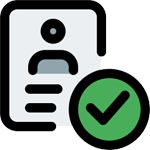
Visitor Pass Management

Check-In and Badging
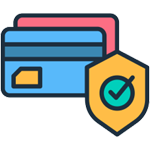
Visitor Checkout
MIS Report
Professional Modules
Visitor Registration is a system used to log, manage, and monitor individuals entering a facility, such as a hospital, office, or secure premises. It streamlines the check-in process by capturing visitor details, purpose of visit, host information, and visit duration. This system enhances security, improves operational efficiency, and provides a professional first impression while maintaining a digital record of all entries for safety, compliance, and reporting purposes.
Features
- Digital Check-In/Check-Out
- ID Verification
- Visitor Badge Printing
- Host Notifications
- Pre-Registration
- Visitor Logbook
- Purpose & Department Selection
- Security Screening Questions
- Photo Capture
- Access Permissions
- Emergency Evacuation List
- Data Privacy Compliance
- Reporting & Analytics
- Blacklist/Watchlist Management
- Mobile & Kiosk Integration
Visitor Pass Management is a system designed to issue, track, and manage visitor passes within a facility, ensuring controlled access and enhanced security. It facilitates the creation of temporary access credentials for guests, contractors, vendors, or other non-staff individuals, while recording essential details such as entry time, purpose of visit, host, and duration of stay. This system plays a crucial role in maintaining a secure environment, ensuring only authorized individuals can access specific areas, and providing an auditable trail of all visitor activity.
Features
- Digital Pass Issuance
- Photo ID Integration
- QR Code or Barcode Scanning
- Access Level Configuration
- Pre-Approved Passes
- Time-Bound Validity
- Host Approval Workflow
- Customizable Templates
- Real-Time Tracking
- Visitor History Logs
- Blacklist & Watchlist Integration
- Emergency Roll Call Support
- Multi-Entry & Multi-Day Passes
- Mobile Pass Support
- Compliance & Data Privacy
Check-In and Badging is a system designed to streamline the process of registering and identifying visitors, employees, or contractors as they enter a facility. It enables secure and efficient check-in procedures while generating personalized badges for access control and visual identification. This system enhances facility security, improves visitor experience, and provides accurate records of all check-ins for operational and compliance purposes.
Features
- Self-Service Kiosks
- Digital Check-In
- Photo Capture
- Instant Badge Printing
- Host Notifications
- Pre-Registration Support
- ID Scanning & Verification
- Custom Badge Templates
- Access Control Integration
- Visitor Pass Expiry
- Check-Out Process
- Real-Time Visitor Logs
- Emergency Evacuation List
- Data Privacy Compliance
- Multi-Language Support
Visitor Checkout is the process of formally recording the departure of a visitor from a facility. It is a critical component of visitor management systems, ensuring accurate tracking of who is currently on-site and maintaining a complete log of entry and exit times. Efficient visitor checkout enhances security, supports emergency planning, and provides valuable insights into visitor flow and duration of stay.
Features
- One-Click Digital Checkout
- Automatic Checkout Reminders
- Badge Scanning for Exit
- Time Stamp Logging
- Real-Time Exit Updates
- Host Notification
- Overstay Alerts
- Check-Out via Mobile
- Multiple Visitor Checkout
- Custom Exit Surveys
- Visitor History Logs
- Automatic Badge Deactivation
- Emergency Roll Call Updates
- Integration with Access Control
- Data Privacy & Compliance
Identity Verification is the process of confirming the authenticity of an individual’s identity using various digital and physical methods. It plays a crucial role in maintaining security, preventing fraud, and ensuring that only authorized individuals gain access to sensitive systems, data, or facilities. In environments like healthcare, finance, and corporate offices, identity verification is essential for compliance, trust, and operational integrity.
Features
- Government ID Scanning
- Biometric Verification
- Real-Time Photo Capture
- Document Authentication
- Two-Factor Authentication (2FA)
- Database Cross-Check
- Mobile Verification
- Digital Signature Capture
- Visitor & Employee Verification
- Secure Data Encryption
- Liveness Detection
- Custom Verification Workflows
- Automated Approval or Flagging
- Audit Logs
- Regulatory Compliance
Notification and Alerts systems are designed to deliver timely, relevant, and automated messages to users based on specific triggers or events. These systems enhance communication, improve response times, and ensure that critical information reaches the right individuals at the right moment. Widely used in healthcare, security, IT, and business operations, they help streamline workflows, improve safety, and maintain operational continuity.
Features
- Real-Time Alerts
- Multi-Channel Delivery
- Custom Alert Rules
- Critical Alert Prioritization
- Scheduled Notifications
- Alert Acknowledgment Tracking
- Group and Role-Based Notifications
- Integration with Other Systems
- Event Logging and Audit Trails
- Escalation Workflow
- Two-Way Communication
- Mobile App Support
- Language Localization
- Silent or Stealth Alerts
- Compliance Ready
Host Notification is a system feature that automatically informs a designated host when their visitor, delivery, or guest arrives at a facility. It enhances communication, reduces wait times, and ensures a seamless visitor experience by keeping staff members promptly informed. Commonly integrated into visitor management and access control systems, host notifications help maintain security and improve operational efficiency in both corporate and healthcare environments.
Features
- Instant Alerts to Hosts
- Multi-Channel Notifications
- Customizable Messages
- Pre-Arrival Notifications
- Photo and ID Sharing
- Two-Way Messaging
- Calendar Integration
- Mobile and Desktop Alerts
- Fallback Notifications
- Visitor Status Updates
- Delivery Notifications
- Department-Based Alerts
- Silent Notifications Option
- Audit Trail and Logs
- Real-Time System Integration
Access Control Integration refers to the seamless connection between visitor or staff management systems and physical or digital access control systems, such as door locks, turnstiles, elevators, or network resources. This integration ensures that only authorized individuals can enter specific areas or access sensitive information based on predefined permissions. It enhances security, improves operational control, and provides a unified approach to monitoring and managing access across an organization.
Features
- Real-Time Access Permissions
- Badge and ID Card Integration
- Biometric System Compatibility
- Time-Based Access Control
- Zone-Based Access Levels
- Automatic Access Expiry
- Visitor-Specific Access
- Audit Logs and Tracking
- Emergency Lockdown Capability
- Integration with Security Systems
- Mobile Access Support
- Pre-Registration Access Setup
- Cross-Platform Compatibility
- Alerts for Unauthorized Access
- Compliance Support
Visitor Logs and Reporting is a feature within visitor management systems that records and organizes detailed information about all visitor activity within a facility. It provides a historical record of entries, exits, visit duration, host details, and purpose of visits. These logs support security, compliance, and operational analysis by offering comprehensive reporting tools that help organizations monitor trends, generate audits, and respond effectively to incidents.
Features
- Comprehensive Visitor Logs
- Searchable Database
- Real-Time Log Updates
- Customizable Reports
- Export Options
- Graphical Dashboards
- Automated Report Scheduling
- Access Logs for Security Audits
- Visitor Duration Tracking
- Anomaly Detection
- Integration with Access Control
- Emergency Roll Call Reports
- Multi-Location Reporting
- Data Privacy Controls
- Regulatory Compliance Support
Visitor Watchlists are security-focused features within visitor management systems that allow organizations to flag, monitor, or restrict entry to specific individuals based on predefined criteria. These lists help enhance safety and compliance by identifying persons of interest—such as banned visitors, high-risk individuals, or those requiring special attention—at the point of check-in. By automating detection and alerting, watchlists support proactive security and risk mitigation efforts across facilities.
Features
- Custom Watchlist Creation
- Automated Watchlist Screening
- Instant Security Alerts
- Photo Matching
- Integration with External Databases
- Flag Reasons and Categories
- Access Restriction Enforcement
- Host Notification on Flagged Entries
- Audit Logs and Incident Records
- Role-Based Access to Watchlists
- Custom Alert Actions
- Silent Alert Option
- Blacklist and Whitelist Support
- Multi-Site Synchronization
- Compliance and Privacy Controls
Customizable Workflows allow organizations to tailor processes and task sequences to match their unique operational requirements. This feature is integral to improving efficiency, ensuring consistency, and optimizing resource use across departments. By enabling dynamic workflows that can be adjusted based on specific roles, departments, or scenarios, organizations can enhance productivity, automate routine tasks, and maintain flexibility as business needs evolve.
Features
- Drag-and-Drop Workflow Builder
- Role-Based Workflow Customization
- Automated Task Assignments
- Conditional Logic
- Approval Processes
- Notifications and Alerts
- Task Dependencies
- Integration with External Systems
- Audit Trails and History Logs
- Real-Time Monitoring
- Multi-User Collaboration
- Dynamic Forms and Data Collection
- Multi-Channel Communication
- Version Control
- Scalable and Flexible
Mobile App Integration allows organizations to seamlessly connect their systems with mobile applications, enabling real-time access and interaction from smartphones or tablets. This integration improves user engagement, enhances productivity, and ensures that employees, visitors, or clients can perform essential tasks on the go. It is especially valuable in environments that require mobile access to data, notifications, and services, improving operational efficiency and responsiveness.
Features
- Real-Time Data Synchronization
- Mobile-Optimized User Interface
- Push Notifications
- Access Control Integration
- Mobile Check-In/Check-Out
- GPS and Location Services
- Mobile Payments and Transactions
- Offline Mode Support
- Document and File Management
- Camera and Scanning Integration
- Biometric Authentication
- User-Specific Customization
- Task Management and Reminders
- Mobile Analytics and Reporting
- Seamless Third-Party Integrations
Evacuation and Emergency Management is a system designed to ensure the safety of individuals during critical incidents such as fires, natural disasters, or other emergencies. It coordinates the flow of information, resources, and personnel to ensure quick, efficient, and safe evacuations. The system typically integrates real-time data, communication channels, and response plans to support both staff and visitors in reaching safety while complying with regulatory requirements.
Features
- Real-Time Emergency Alerts
- Evacuation Route Mapping
- Automated Roll Call
- Emergency Contact Notifications
- Mass Communication System
- Live Incident Tracking
- Assembly Point Designation
- Visitor Tracking
- Backup Power and Communication
- Integration with Building Systems
- Emergency Response Team Coordination
- Incident Reports and Documentation
- Training and Drills Support
- Regulatory Compliance
- Mobile App Integration
Compliance and Data Security refer to the practices, systems, and controls put in place to protect sensitive data while ensuring adherence to relevant regulatory standards. This encompasses safeguarding personal, financial, medical, and business data from unauthorized access, breaches, or misuse. In industries like healthcare, finance, and legal sectors, ensuring compliance with regulations such as GDPR, HIPAA, or PCI-DSS is crucial for maintaining trust and avoiding penalties. A robust data security and compliance framework provides peace of mind for organizations and their clients, knowing that both their data and their privacy are protected.
Features
- Encryption
- Access Control
- Audit Trails
- Data Masking and Anonymization
- Two-Factor Authentication (2FA)
- Compliance Reporting
- Regulatory Compliance Management
- Data Loss Prevention (DLP)
- Secure File Sharing and Storage
- Risk Assessment and Vulnerability Scanning
- Backup and Disaster Recovery
- Mobile Device Management (MDM)
- Incident Response Plans
- Employee Training
- Data Retention Policies
Data Retention and Deletion refer to the policies and practices an organization uses to manage the storage, retention, and disposal of data. This ensures that data is kept only for as long as necessary to fulfill business, legal, or regulatory requirements. Proper data retention ensures compliance with data protection laws, while secure deletion minimizes the risk of data breaches and unauthorized access. This process is crucial for maintaining both operational efficiency and privacy protections in line with regulations such as GDPR, HIPAA, and other data protection laws.
Features
- Automated Retention Policies
- Data Lifecycle Management
- Compliance with Data Protection Regulations
- Retention Period Customization
- Data Deletion Workflow
- Secure Data Disposal
- Audit Trails and Logs
- Retention Period Notifications
- Data Archiving
- Granular Access Controls
- Retention Review and Approval
- Cross-System Integration
- Data Minimization Compliance
- Legal Holds
- Data Recovery and Backup
Cloud and On-Premises Deployment refers to the options available for hosting and managing software systems and applications. With cloud deployment, applications are hosted on remote servers and accessed over the internet, providing scalability, flexibility, and ease of maintenance. On-premises deployment, on the other hand, involves hosting software on the organization's own infrastructure, providing greater control, security, and customization. Organizations can choose either or both deployment models depending on their needs for data control, scalability, and compliance.
Features
- On-Premises Hosting
- Hybrid Deployment
- Scalability
- Security Control
- Cost Efficiency
- Customizable Configurations
- Automatic Software Updates (Cloud)
- Disaster Recovery and Backups
- Data Sovereignty and Compliance
- High Availability and Uptime (Cloud)
- Performance Monitoring
- Multi-Region Deployment (Cloud)
- Integration with Existing Systems
- User Access and Management
Integration with Other Systems refers to the capability of a software solution to seamlessly connect and share data with external systems, applications, or databases. This feature allows organizations to streamline workflows, enhance functionality, and improve efficiency by ensuring that data flows smoothly between different tools or platforms. Whether integrating with customer relationship management (CRM) systems, enterprise resource planning (ERP) systems, or third-party APIs, effective integration ensures that all systems work in harmony to support business operations.
Features
- API Integration
- Pre-Built Connectors
- Data Synchronization
- Bidirectional Data Flow
- Customizable Integration Workflows
- Cloud and On-Premises Integration
- Real-Time Data Exchange
- Single Sign-On (SSO)
- Data Mapping and Transformation
- Error Handling and Notifications
- Multi-System Integration
- Data Privacy and Security
- Data Import and Export
- Scalable Integration
- Scheduled Integration Tasks
MIS (Management Information System) Reports are vital tools that provide structured data and insights to help organizations monitor performance, analyze trends, and support strategic decision-making. By compiling data from various departments, MIS reports ensure transparency, efficiency, and data-driven management.
Pricing
Professional Plan
Price ₹ 24,999 / Per Year
Regular Price: ₹ 34,999
Including 1 year service and support
Professional Plan Modules

Visitor Registration

Visitor Pass Management

Check-In and Badging

Visitor Checkout
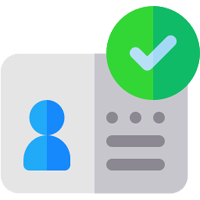
Identity Verification
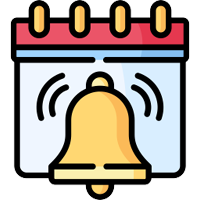
Notification and Alerts

Host Notification
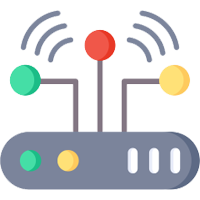
Access Control Integration
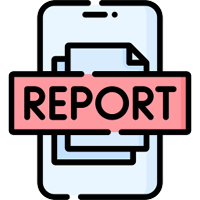
Visitor Logs and Reporting
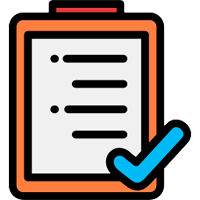
Visitor Watchlists

Customizable Workflows
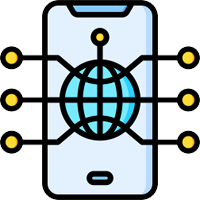
Mobile App Integration

Evacuation and Emergency Management
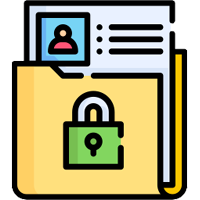
Compliance and Data Security
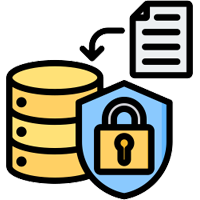
Data Retention and Deletion
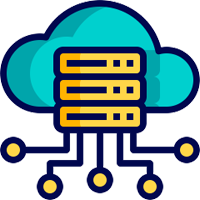
Cloud and On-Premises Deployment
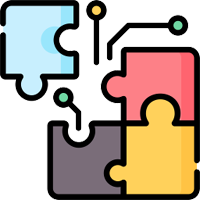
Integration with Other Systems
MIS Report
Why Choose Us:
- Creativity And Innovation
- Dedicated Experts
- Trusted Security
- Integrity And Transparency
- Timely Delivery
- Result Driven Approach
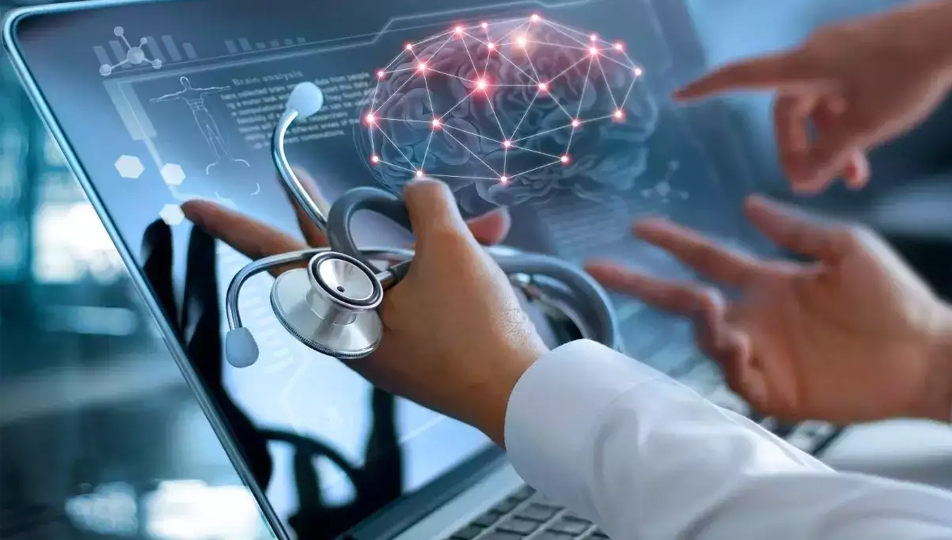
Let us take the technical weight off your shoulders
BOOK A CALLLet’s Get Started
We offer full-cycle technology solutions that streamline your digital transformation journey. With cutting-edge technical expertise, INT. simplifies complex business challenges with innovative solutions for 100+ fastest-growing enterprises.

